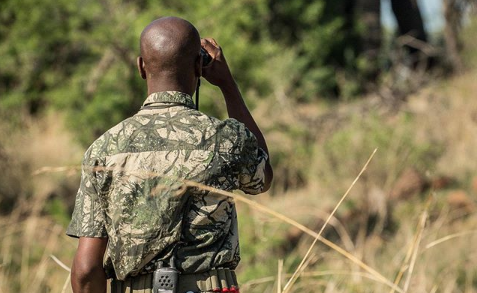A widely documented issue affecting Africa’s ecosystems and the prosperity of local communities is wildlife poaching – and more specifically, rhino poaching, especially in South Africa.

Although a statement by the Department of Forestry, Fisheries & Environment revealed a 43% decline in rhino poachings during the first six months of 2022 compared to the same period in 2020, another worrying trend has emerged: the killing of park rangers, security personnel and forestry activists.
An integral part of conservation efforts against poaching is the collective courage of wildlife protectors who dedicate their lives to the cause. But according to figures reported by Global Witness, at least 1 733 land and environmental defenders were murdered globally between 2012 and 2021 by hired guns, organised groups and their local governments. In South Africa, the number of deaths recorded was 92 for 2021, with 46 ruled as homicides. A record high for a single calendar year.
The issue has caught the attention of interdisciplinary innovators in the science and technology sectors who have produced promising preliminary results that could potentially reduce poaching and the loss of wildlife protectors’ lives.
Connected Conservation
Technology companies Dimension Data and Cisco first introduced their Connected Conversation effort in 2015 by designing a solution connecting multiple types of technology in an unspecified reserve. These included IT infrastructure, managed services, data analytics, multiscreen communication, secure network and data flow, a point-to-point reserve network, CCTV cameras, and biometric scanning. The technology tracked people’s movements in and out of a game reserve, identifying those with dubious intent and helping to pre-empt harm to the animals.
According to a case study report published by Dimension’s data, poaching in the game reserve dropped by 96% in its first year. And in 2017 and 2018, there were zero rhinos poached. In addition, they reduced incursions into the reserve by 68%.
Rhisotope Project
Another innovative anti-poaching measure, The Rhisotope Project was founded in 2021 by Prof James Larkin, Director of the Radiation and Health Physics Unit at Wits University and co-founder Suzanne Boswell. Essentially, they hope to implant chemical elements (radioisotopes) into the horns of rhinos so they can be detected when smuggled. The substance will be contained in the horn and not travel anywhere else in the rhino’s body, making it safe for the animal.
‘Making these rhino horns more detectable provides a simple solution for horn tracking when they are smuggled across borders because 10 000 to 11 000 radiation detectors are installed at seaports, airports and other security checkpoints,’ said Larkin.
Larkin added that the project is currently in the second phase of its proof of concept. Here they are using computer-based analysis to identify the detection levels of radioactive dosages at airports within a 95% area of certainty for different types of storage mediums. Following those assessments, they will continue to perform more computer dose analyses on rhino models to test for safety.
Larkin was adamant about the community aspect of the project, stating that involving members of the communities through education and training programmes could aid in more community-led interventions in conservation. ‘I think it’s time we let the world know that our rhinos are radioactive,’ Larkin added.
You can learn more or donate towards the projects:
Rhisotope project: //rhisotope.org/donate/
Connected Conservation Foundation: https://connectedconservation.foundation/donation
ALSO READ: More than 70 000 Maasai evicted from ancestral grounds in Tanzania














